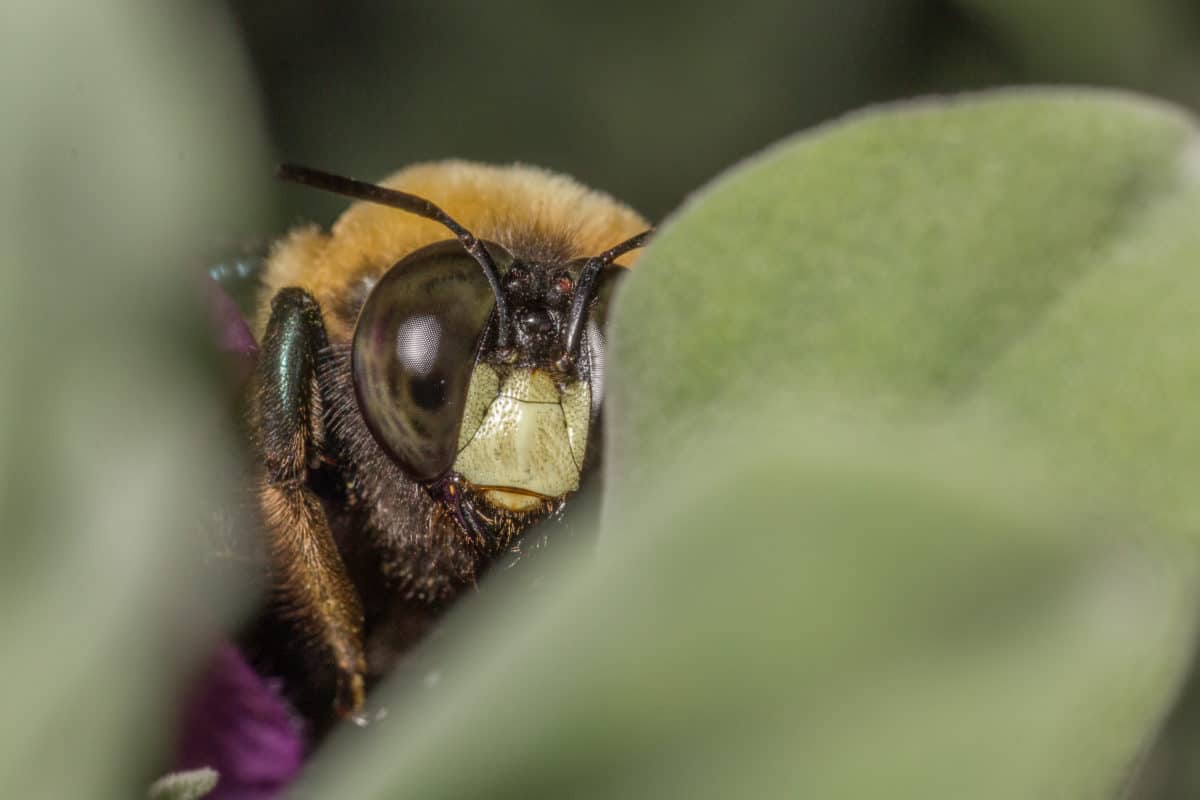Few things can derail a solar project faster than a sudden outburst of local opposition, generally due to the industrial aesthetics of an installation or its siting on potentially productive agricultural land.
But, according to a growing body of research, such opposition can be turned into broad support by designing projects with “pollinator-friendly” landscaping — a trend gaining momentum across the country. Instead of grading project sites and covering exposed soil with gravel or turf, developers are planting a mix of grasses, native vegetation and wildflowers that attract a range of pollinators — insects and animals — critical for local agriculture.
For solar developers, going pollinator-friendly can boost the output of an installation, said Rob Davis, director of the Center for Pollinators in Energy, based in Minnesota. A site covered in crushed rock or gravel can act as a heat sink, cutting project efficiency by half a percent for every 2 degrees of temperature increase above 77 degrees Fahrenheit, he said.
“Thicker vegetation helps you mitigate the effects of heat and keep your solar farm operating at peak temperature,” Davis said during a May 5 webinar sponsored by the Clean Energy States Alliance (CESA).
Other benefits include improved water and soil quality — pollinator-friendly plants tend to have deep root systems, which cut down on run-off — along with lower construction and site maintenance costs. Pollinator-friendly policies and programs also tend to draw diverse stakeholder support, said Georgena Terry, another webinar speaker and author of a CESA report on pollinator-friendly state policies.
They are “feel-good initiatives,” she said. “They have few detractors and appeal to both sides of the aisle.”
Pollinator-friendly scorecards
In fact, seven states, red and blue, now have laws supporting the voluntary adoption of pollinator-friendly landscaping for solar projects. Minnesota led the way with the first pollinator-friendly law in 2016, followed by similar initiatives in Illinois, Maryland, Michigan, New York, South Carolina and Vermont.
Even without a specific law, Virginia has developed an extensive voluntary program — Pollinator Smart — including an online database of native plants and wildflowers, to help developers identify appropriate plants for individual project sites.
Programs vary regionally, but a common feature is the use of a pollinator-friendly scorecard to rate projects based on criteria such as the percentage of a site planted with a pollinator-friendly seed mix, and the number of native grasses and wildflowers in each mix.
Other states are following suit with a range of policies and incentives. A new report from EQ Research focuses on Indiana as a case study in setting up the framework for pollinator-friendly policies. A still-nascent solar market, Indiana currently has 400 MW online but is on track to add 6,425 MW of solar in the next decade due to ongoing coal plant retirements.
With 1 MW of solar requiring 5 to 10 acres of land in the heavily agricultural state, pollinator-friendly solar is a common-sense strategy for heading off solar moratoriums and other pushback in many communities. A key benefit here is conserving sites for a future return to agriculture, said Ben Inskeep, EQ policy research analyst and co-author of the new report.
Economic impacts, especially in small, rural communities, can also be significant and further boost support. In Minnesota, “solar honey,” from honey bee hives located near pollinator-friendly solar projects, is now showing up at gourmet food shows. Virginia’s Pollinator Smart program is seen as a first step toward developing a statewide industry in native seeds.
The land under and around panels
Along with legislative support, Inskeep pointed to already successful models of pollinator-friendly provisions in local permitting ordinances and in utility and corporate procurement practices. In 2018, Xcel Energy in Minnesota became the first U.S. utility to require developers to include a pollinator plan in their bids for solar projects.
The EQ report notes that Purdue University is now drafting a pollinator-friendly scorecard for Indiana and ends with a call for developers to design pollinator-friendly projects. For example, installing panels at least 36 inches off the ground at their lowest point will ensure adequate room for native plants and grasses.
The bottom line here is that every ground-mounted solar project has environmental impacts; grading project sites and trucking in turf or tons of gravel for ground cover can represent a negative tradeoff “that more and more communities are wrestling with,” said Davis.
“When we all think about the clean, green energy transition, we would really like to avoid negative trade-offs,” he said. “We’d really like to ensure that the land under and around the panels is benefiting us as much as the clean energy is.”
This content is protected by copyright and may not be reused. If you want to cooperate with us and would like to reuse some of our content, please contact: editors@pv-magazine.com.








By submitting this form you agree to pv magazine using your data for the purposes of publishing your comment.
Your personal data will only be disclosed or otherwise transmitted to third parties for the purposes of spam filtering or if this is necessary for technical maintenance of the website. Any other transfer to third parties will not take place unless this is justified on the basis of applicable data protection regulations or if pv magazine is legally obliged to do so.
You may revoke this consent at any time with effect for the future, in which case your personal data will be deleted immediately. Otherwise, your data will be deleted if pv magazine has processed your request or the purpose of data storage is fulfilled.
Further information on data privacy can be found in our Data Protection Policy.